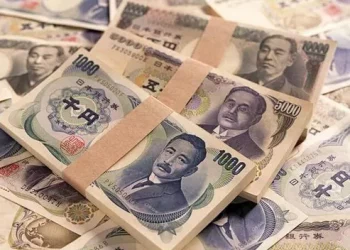The global financial landscape is a complex web of interconnected currencies, each with its own unique dynamics. One such pairing that has garnered increased attention is the exchange rate between the Chinese Yuan (RMB) and the Zambian Kwacha. Investors, businesses, and policymakers alike are keenly observing the movements in this exchange rate, as it holds significant implications for trade, investment, and economic stability. In this article, we will delve into the intricacies of the yuan to kwacha exchange rate, examining the current state, factors influencing it, and its broader economic implications.
Understanding the Basics: Yuan and Kwacha
Before delving into the current exchange rate dynamics, it’s crucial to understand the currencies involved. The Chinese Yuan, also known as Renminbi (RMB), is the official currency of the People’s Republic of China. With its internationalization, the RMB has become a key player in global trade and finance. On the other side of this pairing is the Zambian Kwacha, the official currency of Zambia. As a landlocked country in Southern Africa, Zambia’s economic ties with China have become increasingly significant in recent years.
Current Exchange Rate Analysis
As of the latest data available, the yuan to kwacha exchange rate stands at 3.63. This rate reflects the value of one Chinese Yuan in Zambian Kwacha. Analyzing the current exchange rate is crucial for various stakeholders, including businesses engaged in Sino-Zambian trade, investors eyeing opportunities in either country, and policymakers aiming to maintain economic stability.
See Also:Current RMB Exchange Rate – Yuan to Naira Today
Factors Influencing the Exchange Rate
Several factors contribute to the fluctuations in the yuan to kwacha exchange rate. Understanding these elements is essential for predicting future movements and making informed decisions in the financial landscape.
Economic Indicators: Both China and Zambia’s economic indicators play a significant role. GDP growth, inflation rates, and employment figures can impact the exchange rate.
Trade Balance: The balance of trade between the two nations affects their currencies. A trade surplus for China might strengthen the yuan, while a deficit could weaken it.
Interest Rates: Divergent interest rate policies between the two countries influence capital flows, affecting exchange rates. Higher interest rates in China might attract foreign capital, impacting the yuan’s value.
Political Stability: Political stability is a key factor in currency valuation. Political uncertainty in either China or Zambia can lead to fluctuations in the exchange rate.
Global Economic Conditions: The overall state of the global economy can impact the yuan to kwacha exchange rate. Economic crises or global recessions can lead to currency adjustments.
Central Bank Policies: Monetary policies implemented by the People’s Bank of China and the Bank of Zambia, such as currency interventions and interest rate decisions, influence the exchange rate.
Commodity Prices: As Zambia heavily relies on commodity exports, fluctuations in global commodity prices, especially copper, can impact its economy and, consequently, the kwacha’s value against the yuan.
Bilateral Relations: The diplomatic and economic relations between China and Zambia can impact the exchange rate. Agreements, trade deals, or disputes can influence investor sentiment.
Market Sentiment and Speculation: Traders’ perceptions and speculative activities in the foreign exchange market can cause short-term fluctuations in the exchange rate.
COVID-19 Impact: The ongoing global pandemic has introduced an additional layer of complexity. The economic fallout and recovery efforts can influence the exchange rate.
Implications for Businesses and Investors
The yuan to kwacha exchange rate has direct implications for businesses and investors engaged in cross-border activities between China and Zambia. For businesses, managing currency risk becomes paramount, requiring effective hedging strategies to navigate potential fluctuations. Investors, on the other hand, must consider the exchange rate movements when making investment decisions in either market, weighing the potential returns against currency risks.
Government Policies and Responses
Policymakers in both China and Zambia closely monitor the exchange rate, as it directly ties into their economic objectives. Currency stability is often a priority, and central banks may intervene in the foreign exchange market to maintain a desired rate. Additionally, governments may implement policies to address trade imbalances, influence interest rates, or enhance economic cooperation to stabilize their currencies.
Looking Ahead: Future Trends and Considerations
As we move forward, keeping a close eye on the yuan to kwacha exchange rate is essential for anyone with a vested interest in the economic relationship between China and Zambia. The ongoing economic recovery from the global pandemic, shifts in global trade dynamics, and geopolitical developments will likely shape the future trajectory of this exchange rate.
Conclusion
In conclusion, understanding the dynamics of the yuan to kwacha exchange rate requires a holistic view of economic, political, and global factors. The specific exchange rate amount at any given moment is a reflection of the intricate interplay between these elements. Businesses, investors, and policymakers must navigate this landscape with a keen awareness of the potential risks and opportunities that arise, ensuring a resilient and adaptive approach to the ever-evolving world of international finance.
Related Topics:
Current RMB Exchange Rate to Pakistani Rupee
Current RMB Exchange Rate: Yuan to Pounds
Current RMB Exchange Rate: Yuan to Rand



























